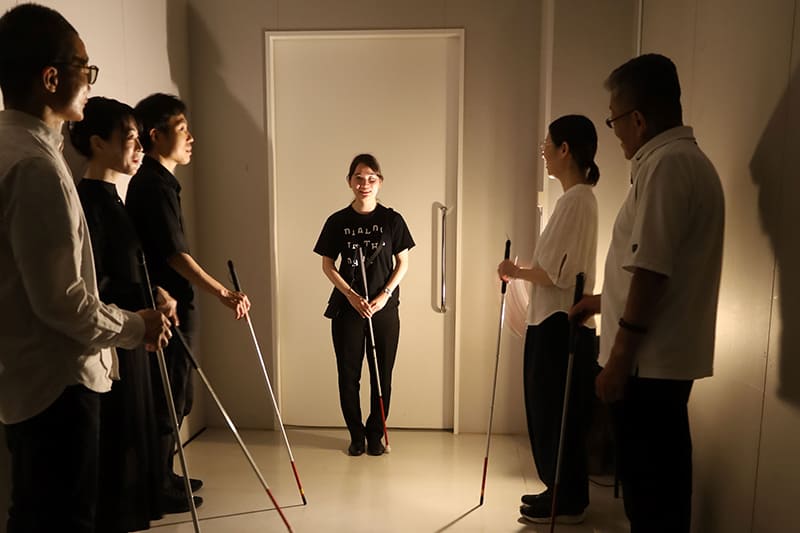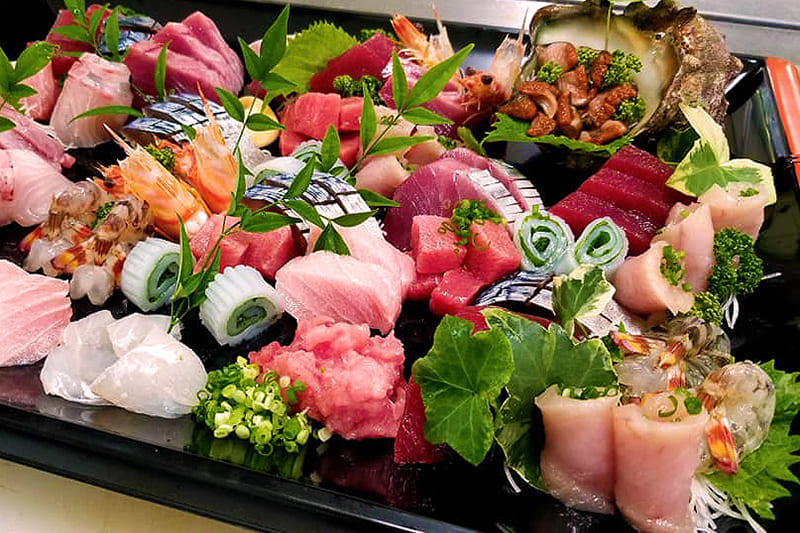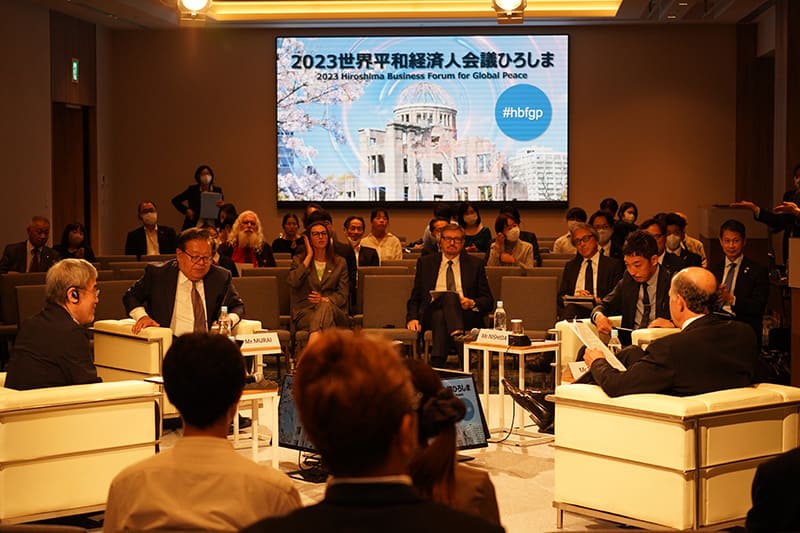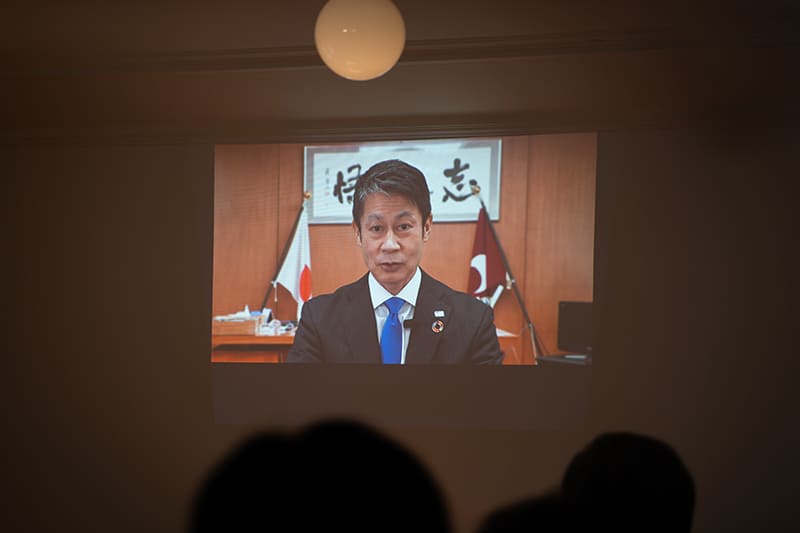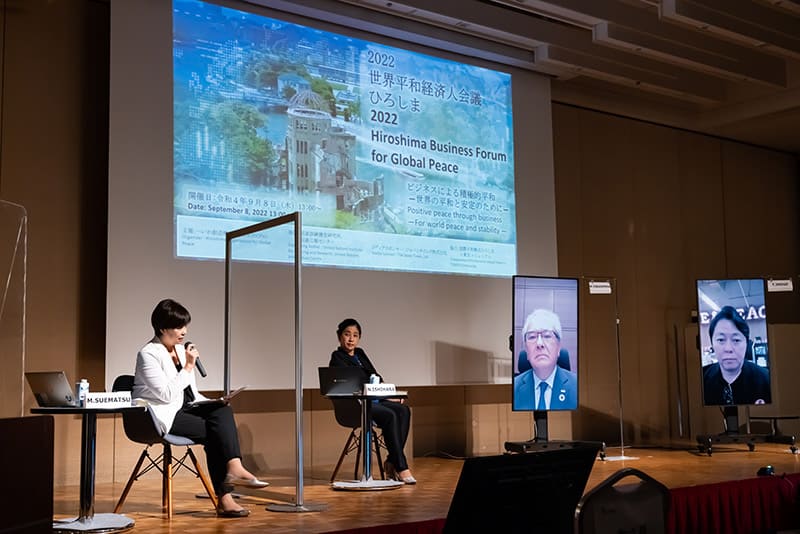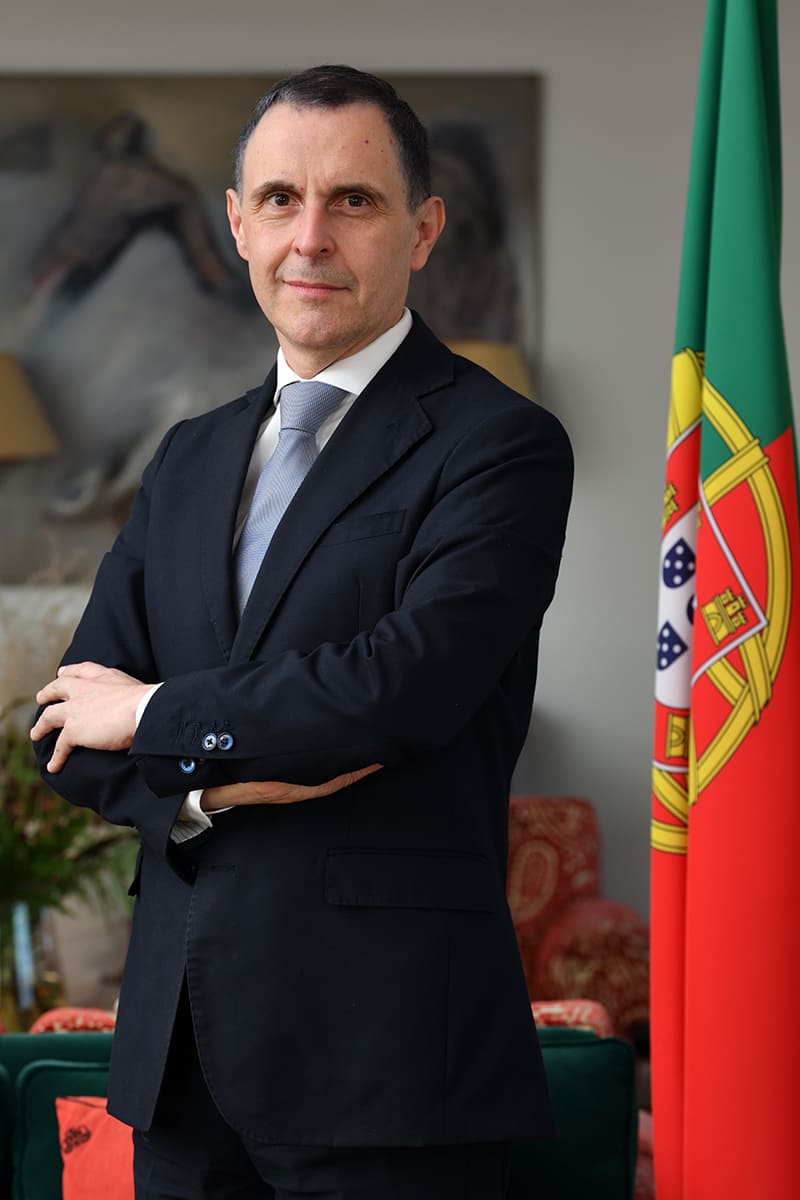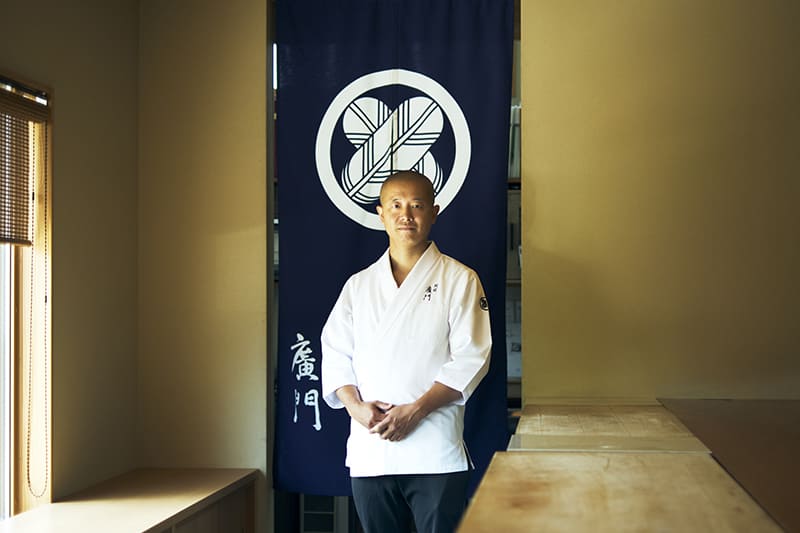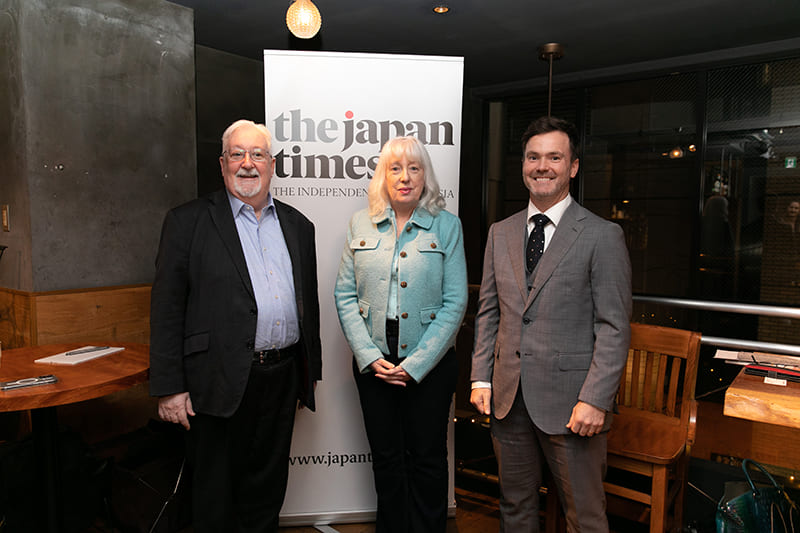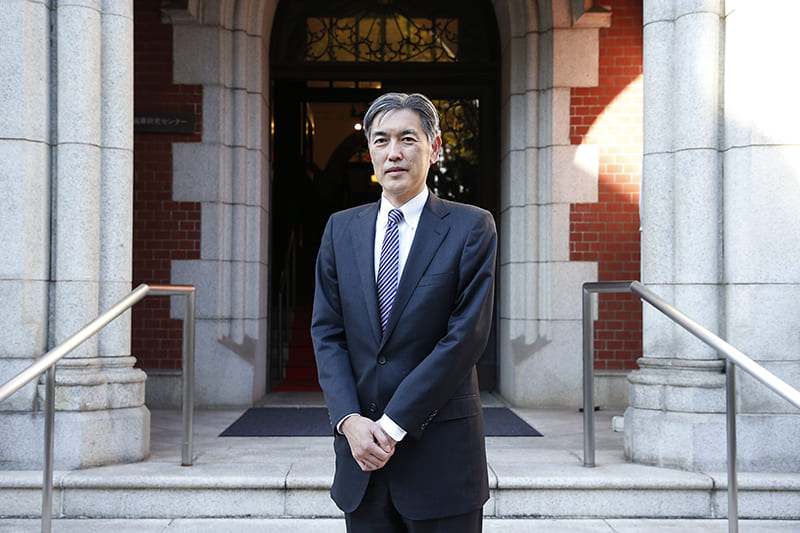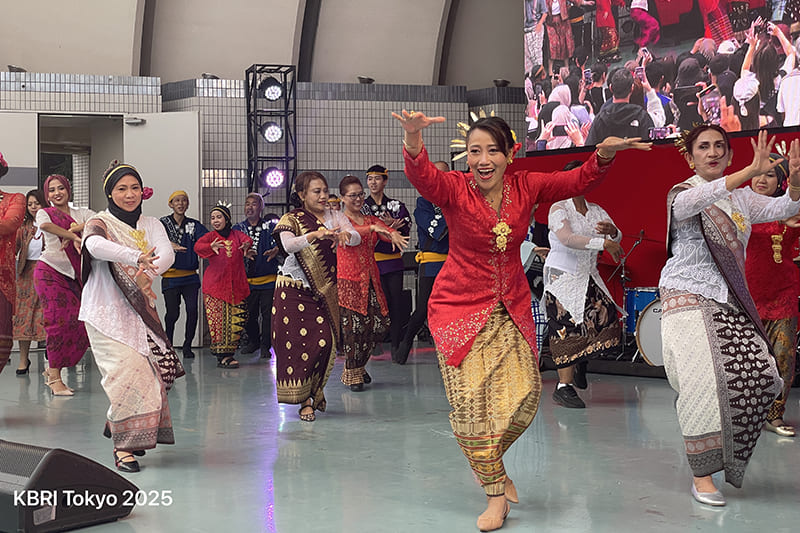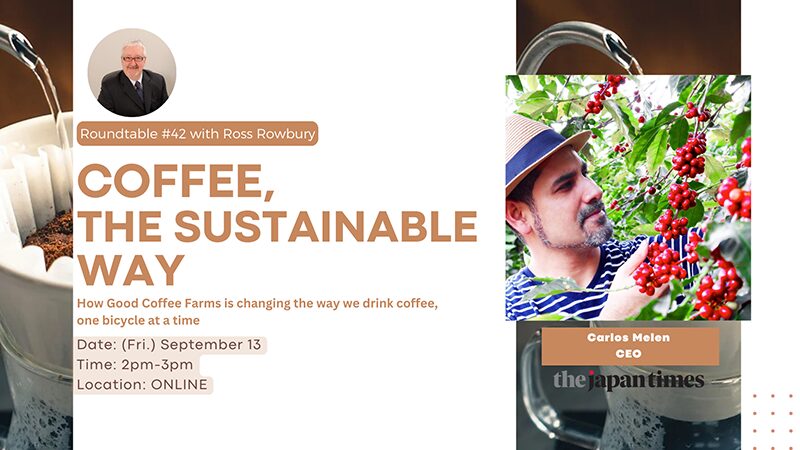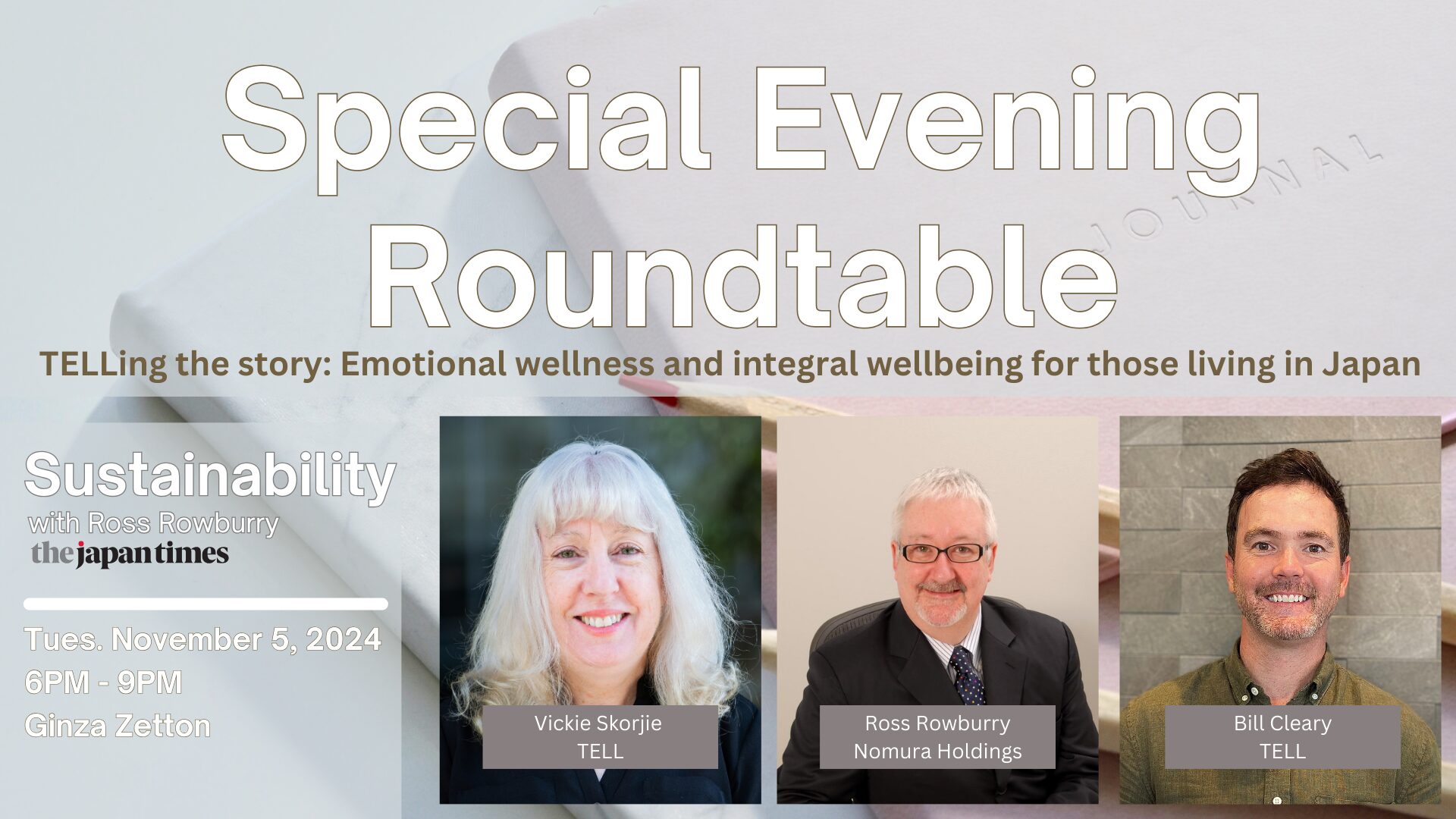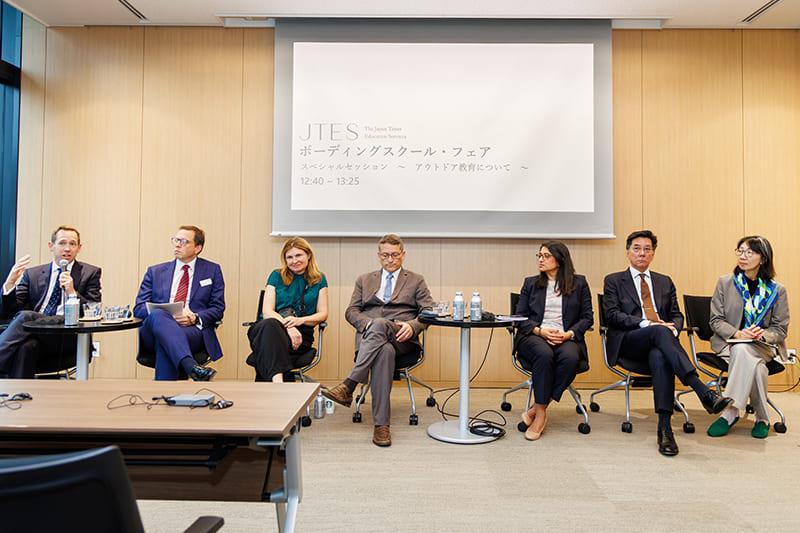August 18, 2025
Peace in the Dark program offers reflective journey in Hiroshima
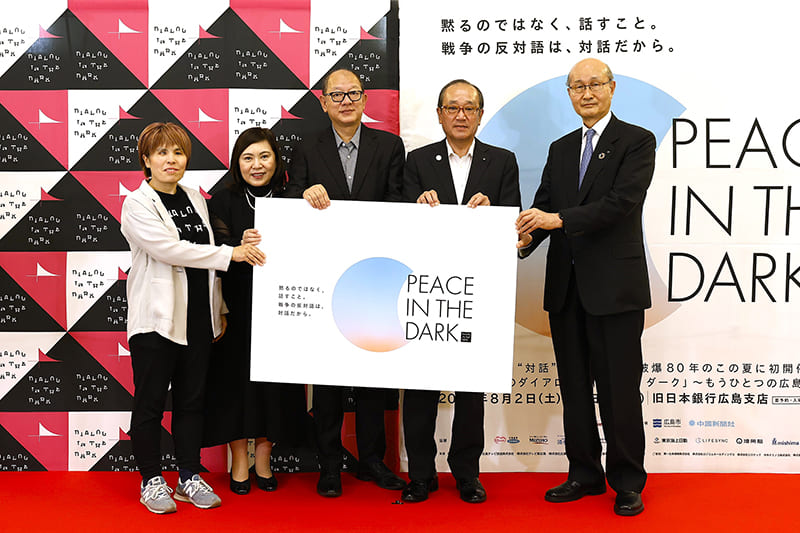
Marking the 80th anniversary of the atomic bombing, Hiroshima hosted a powerful experiential program called Peace in the Dark where participants could quietly reflect on the meaning of peace.
Held from Aug. 2 to 11 at the former Bank of Japan building in Naka Ward, with an opening ceremony on Aug. 1, the event was co-organized by the City of Hiroshima and the Dialogue Japan Society. All sessions were fully booked before launch. Guided by visually impaired attendants through complete darkness, participants engaged in dialogue — and emerged with their own personal reflections on what peace truly means.
The opening ceremony featured speeches by Hiroshima Mayor Kazumi Matsui, Shimizu Corp. senior adviser Yoichi Miyamoto and others. Shinsuke Shimura, the creator of the Dialogue Japan Society, referenced the “miracle of the Bank of Japan” — when, just two days after the atomic bombing, it let commercial banks use the building and citizens gathered there to make withdrawals, in many cases lacking documentation and relying on trust. Remarkably, the amounts they reported were found to be almost entirely accurate. “Turning this place into darkness and engaging in dialogue about peace carries deep meaning,” Shimura emphasized. “This may be a small project, but it is by no means powerless.”
Matsui, who previously experienced the Dialogue in the Dark program in Tokyo, reflected: “It freed me from my fixed assumptions. Dialogue without relying on sight deepened my understanding and empathy toward others.” He expressed hope that more people would have the opportunity to experience it, calling it a valuable initiative that fosters a culture of peace through dialogue and mutual respect.
Yoichi Miyamoto, a senior adviser at Shimizu Corp., reflected on the company’s involvement in constructing and later restoring the historic venue and noted, “Through dialogue, we cultivate the ability to embrace diversity and stand on equal ground.” He stressed the importance of such experiences in fostering mutual understanding and empathy in a world increasingly marked by division.
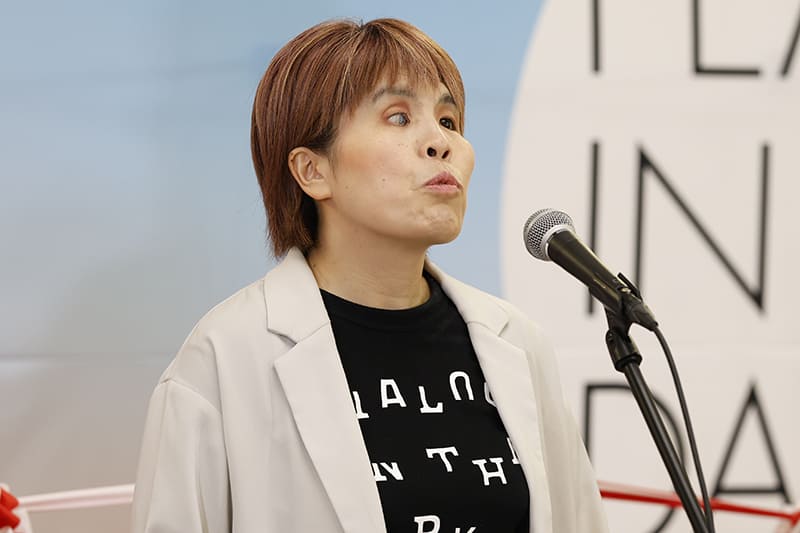
Kiyoe Shimura, representative director of the Dialogue Japan Society, introduced the program as “the world’s first Dialogue in the Dark centered on the theme of peace.” She noted that “the opposite of war is not simply peace, but the effort to continue a fair dialogue” and expressed her commitment to sustaining peace-building initiatives into the future.
Miki Kawabata, an attendee originally from Hiroshima, recalled what survivors had told her when she was a child: “One told me, ‘Peace means forgiving each other.’ Another said, ‘Peace is passing on stories to children and thinking together.’ Their words made me reflect on what peace truly means to me.” She expressed her hope that those gathered would also take time to reflect on peace together.
In the program, participants formed small groups and stepped into total darkness. Given white canes, they navigated without vision, relying solely on voices and physical cues. While initial confusion and unease were common, conversation gradually emerged and a quiet sense of connection began to grow. It was precisely through the absence of sight that participants noticed things they might otherwise have overlooked.
Within the darkness, a symbolic journey transported them to the summer of 1945 — the day before the atomic bomb was dropped. Through sound and imagination, they encountered the lives and thoughts of people from that time. This was not a space for seeking the “right answer,” but for sharing questions without visual cues. As participants listened closely and turned inward, emotions rarely touched in daily life quietly surfaced.
Toward the end of the program, participants returned to 2025 and were given time to reflect and engage in conversation with those they had journeyed into the darkness with. As they listened to each other’s words, they were gently invited to contemplate what peace meant to them.
Even without clear answers, carrying that question home lies at the heart of this experience. The words exchanged at the event continue to linger quietly in the mind, subtly transforming the way one sees the world outside.
Many shared reflections such as “Getting to know someone is the first step toward liking them” and “If we learn to acknowledge and support one another, a peaceful future will surely follow.” One participant said: “Because I couldn’t see, I was able to focus entirely on the other person’s heart. It’s been a long time since I’ve connected with someone so deeply.”
Some were encouraged by a simple word from another, while others found comfort in shared moments of silence. The question of what peace means to them, gently kindled in the dark, became a small light within each participant — illuminating the first steps toward a more peaceful future, each in their own way.

